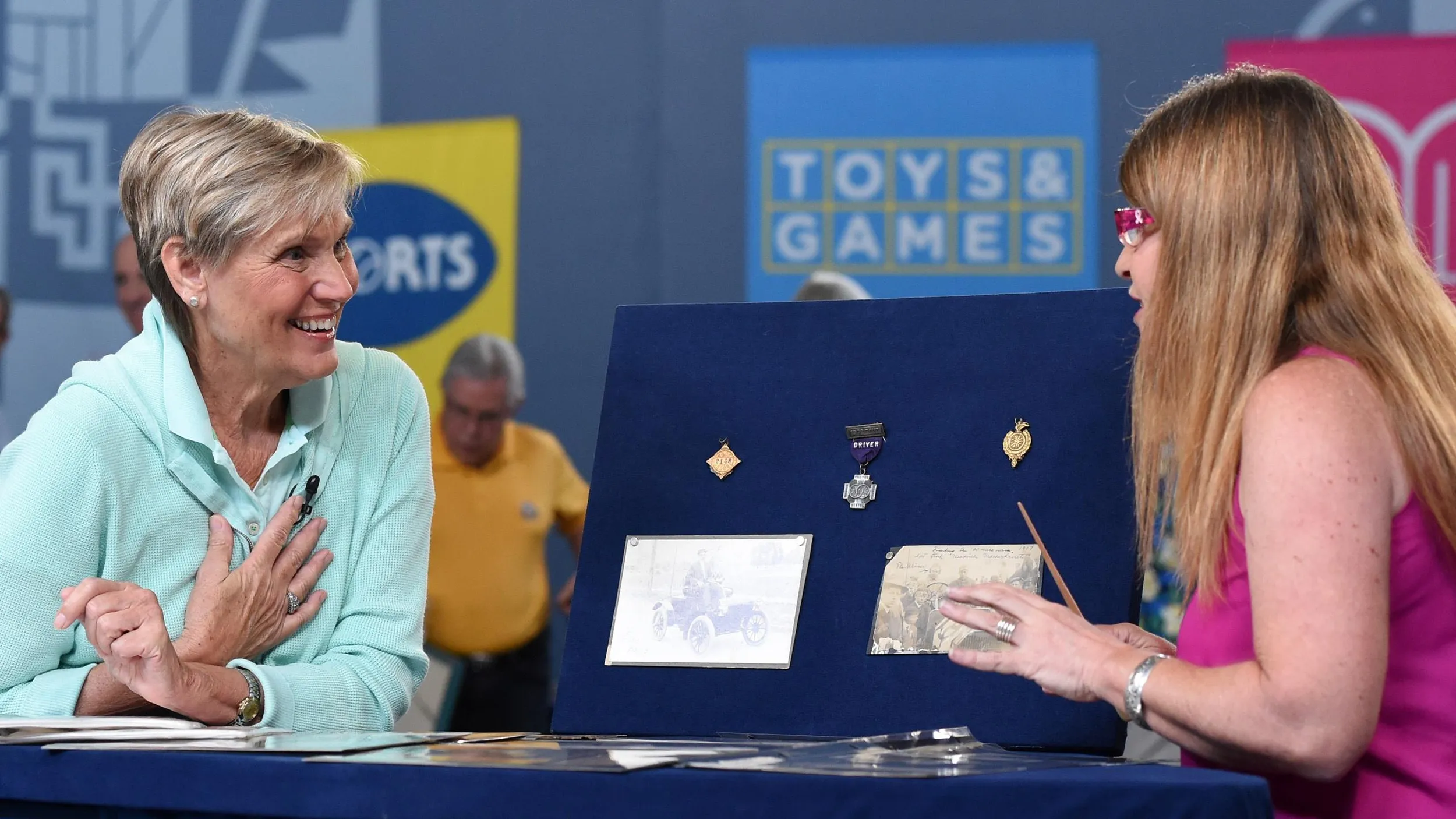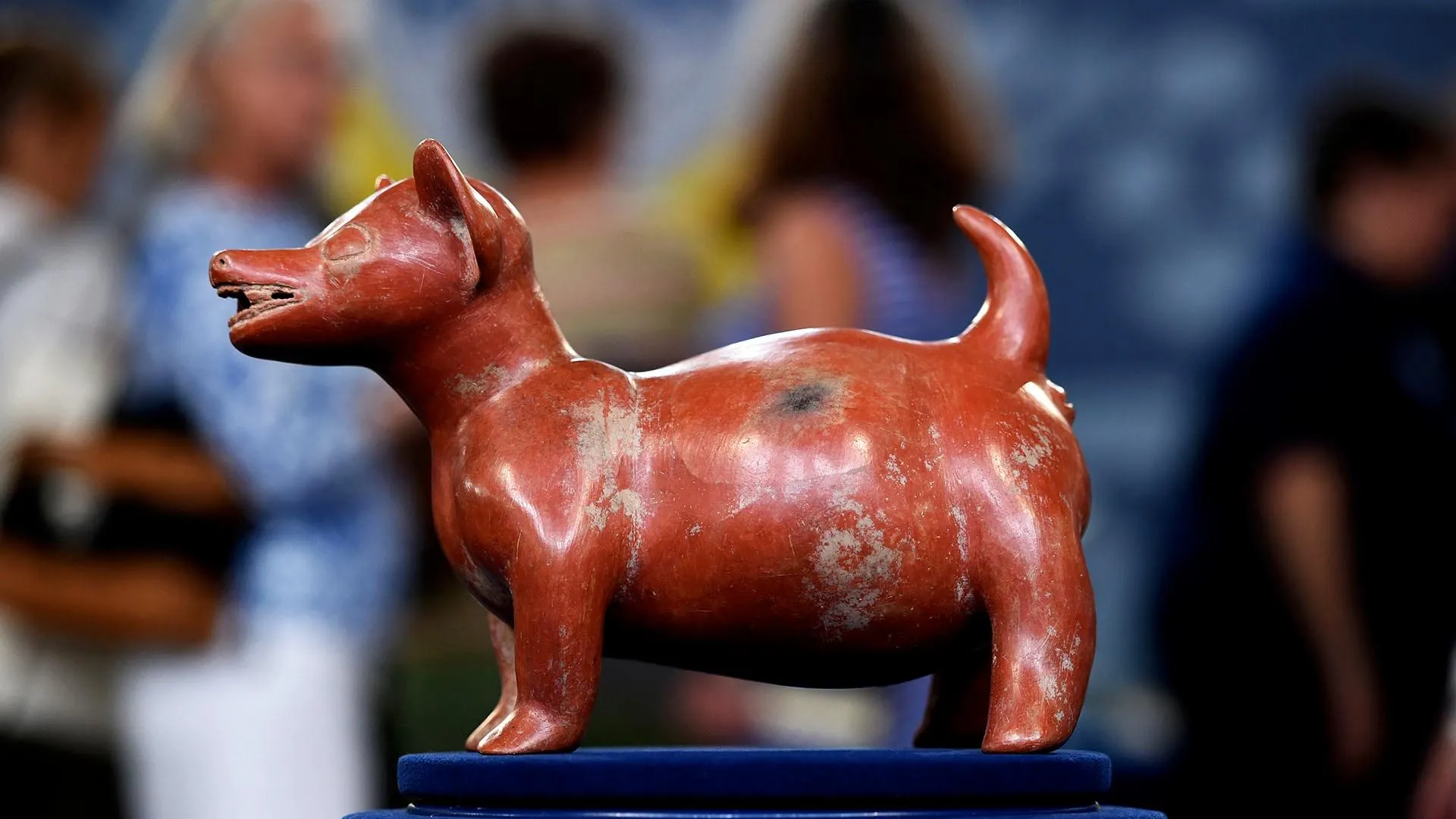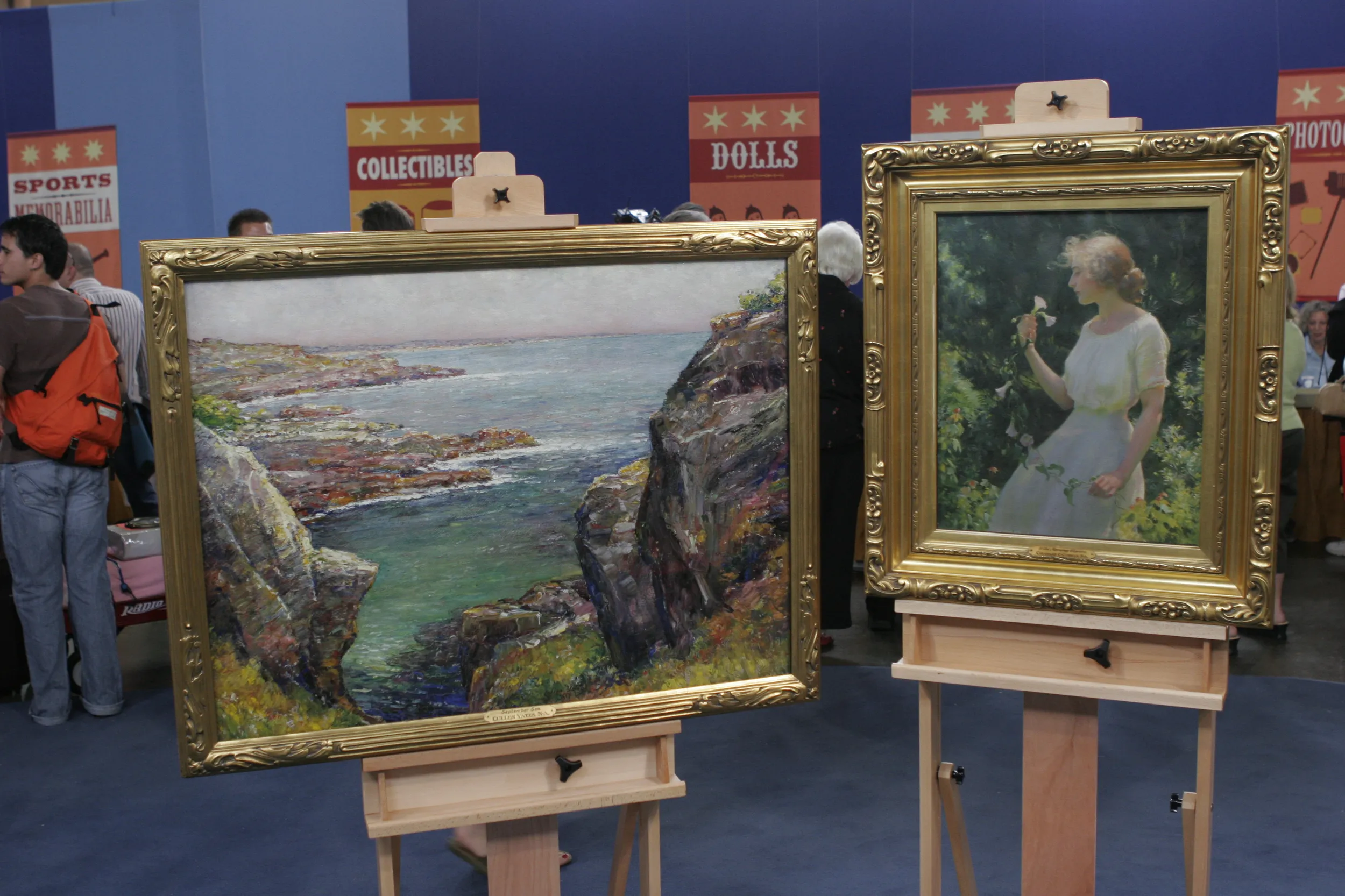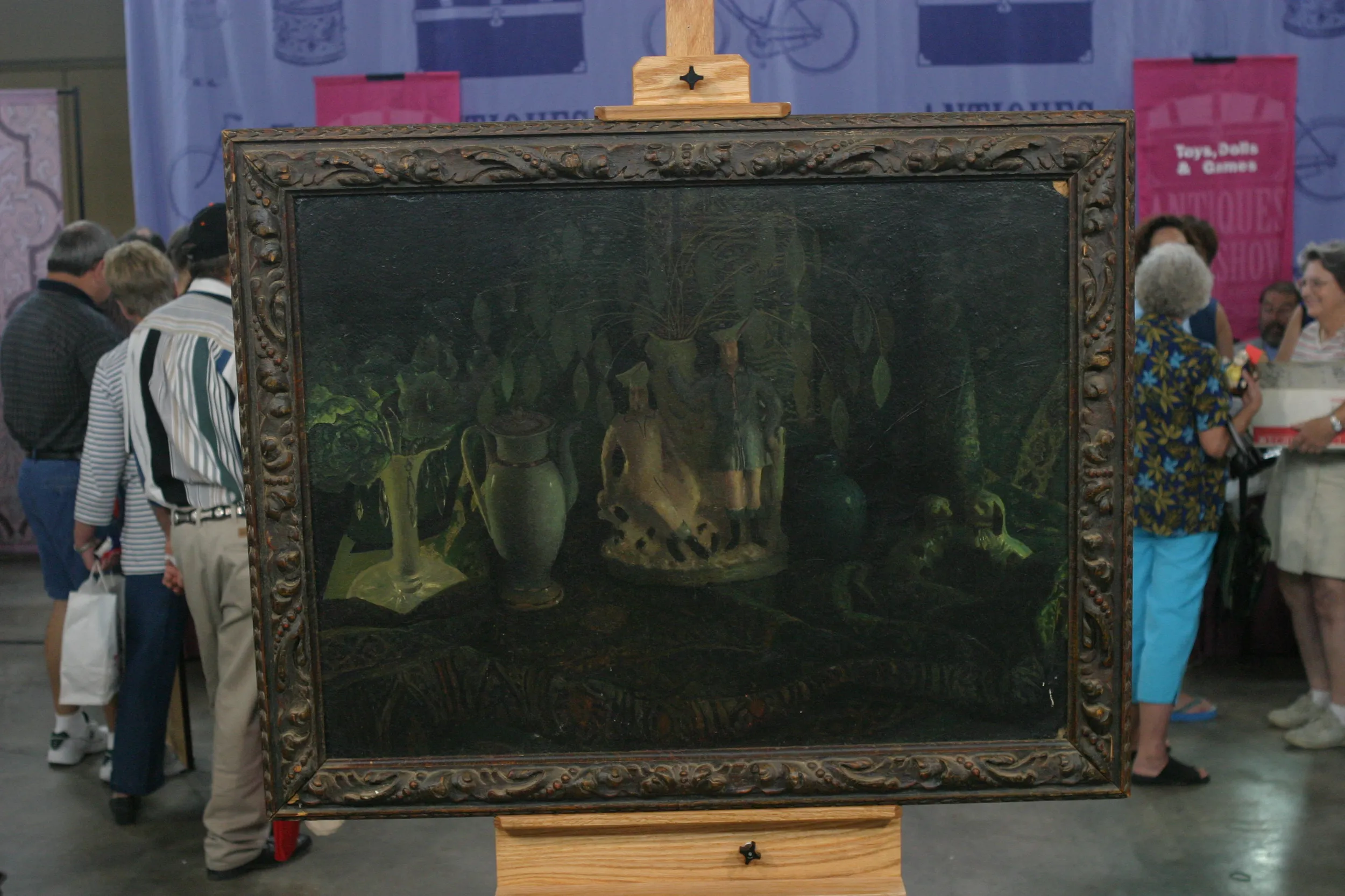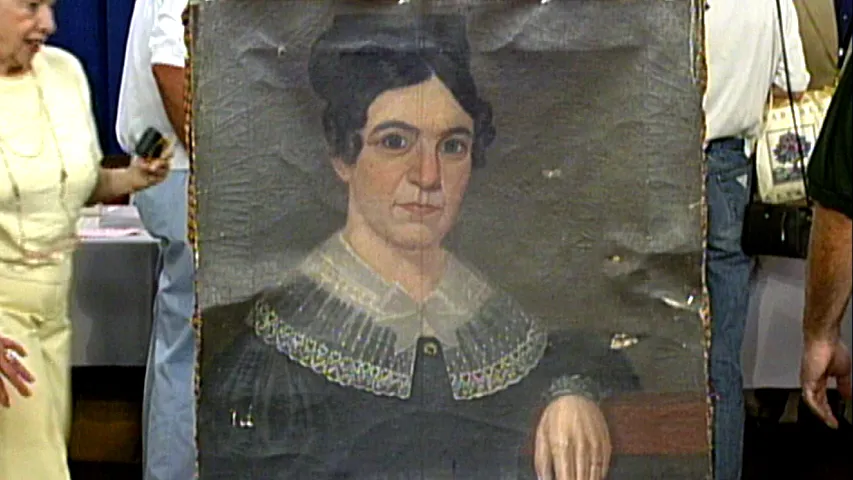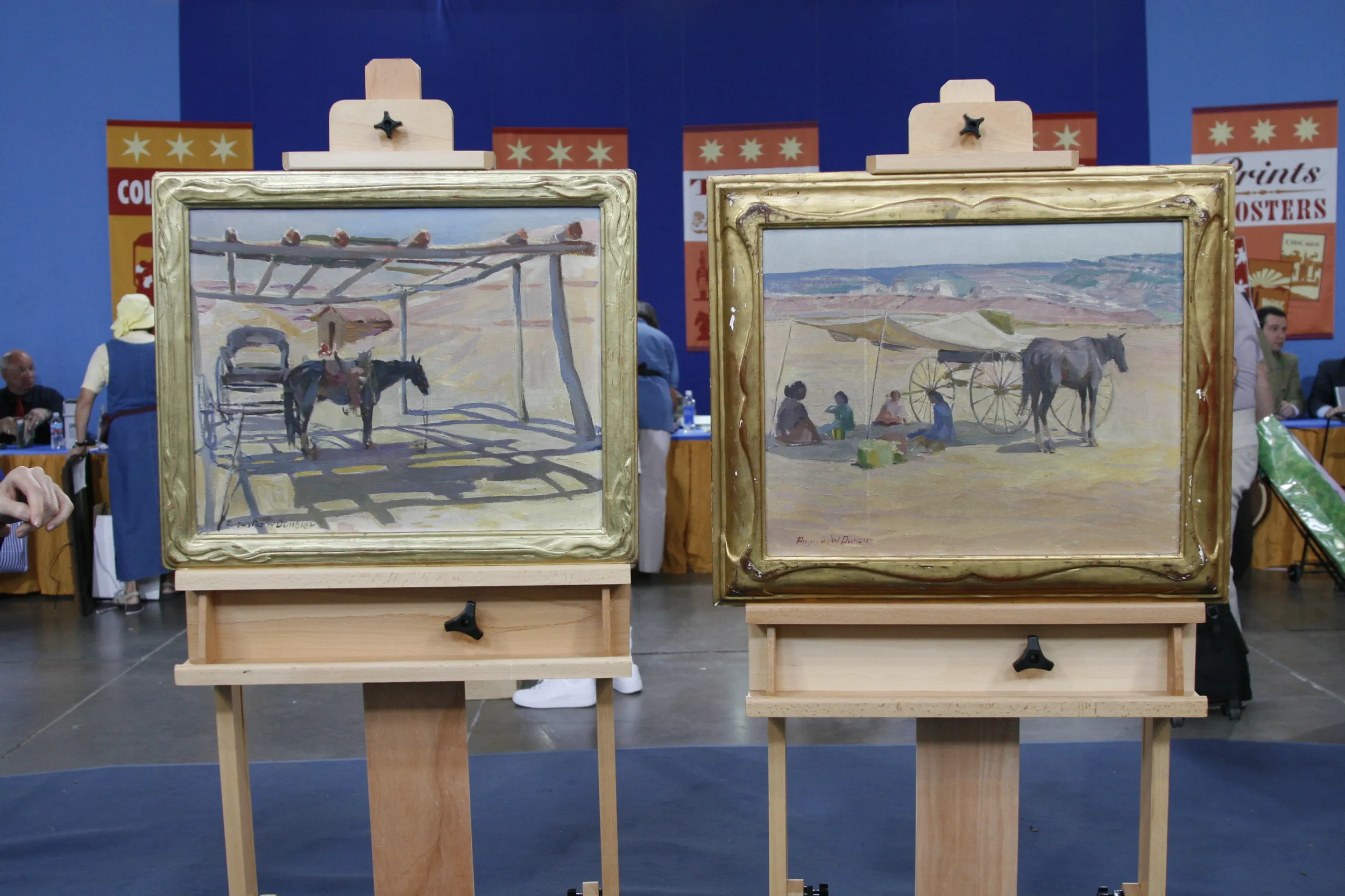GUEST: This is the story of... Aesop's fables story of Belling the Cat. So, basically, the concept is the mice all thought that it would be good to get together and figure out how to destroy or get rid of their threat, and they thought putting a bell on the cat was the idea, and then the concept is "Who will bell the cat?" and the moral of the story is it's easier to have a plan than to follow through sometimes.
APPRAISER: Well, that's for sure. So do you know who painted this?
GUEST: What we found, and it took us quite a while because the signature is difficult to read, Philimont Léon Couturier, if I'm saying that right-- it's, like, French for dressmaker-- is who we think is the artist.
APPRAISER: Well, I don't know if I can improve on your French. I think it's Philibert Léon Couturier.
GUEST: Thank you.
APPRAISER: That's my schoolboy French coming to the fore there. And as you say, it is signed. I mean, it's rather hard to see right down here, just below a rather troubling bit of restoration there. I've seen more sympathetic restoration done in the past over this poor little rat's tail. And, of course, this is an oil painting by Couturier, oil on canvas. He was an interesting artist. He was known amongst his friends as the king of the poultry house, because he was best known for doing chickens and ducks and such like. Here, he's doing rats. This may well be his rat period, I don't know. As you say, here's a chap having the great idea, "We've got a belligerent cat on our hands, let's tie a bell around him," and all these chaps are thinking, "That's a great idea, but I'm not sure I want to do it." And you have the sense that there's quite a political subtext going on here as well...
GUEST: Mm-hmm.
APPRAISER: ...particularly given the time when it was painted in France. Couturier was probably having a go at some of the politicians of that time as well. They have great ideas, but they can't really follow through and nobody really wants to do them. But it's an interesting subject, for sure. Where did you acquire it from?
GUEST: Well, I inherited it from my uncle. I don't know where exactly, someplace in the panhandle of Florida is where he had gotten it from-- in an antiques store, I think.
APPRAISER: Right, well, it's certainly an image that I'm sure I'll be remembering long after I've gone tonight. (laughs) Have you given any thought as to what the value of it might be?
GUEST: I really don't have any idea.
APPRAISER: Well, at auction, the ducks and the chickens, they're not doing as well as they used to. They usually sell for around about $1,000 or so. But I actually found one not dissimilar to this, where it sold at auction for a little over $3,000.
GUEST: Oh, wow.
APPRAISER: And I would feel pretty comfortable putting an estimate of $3,000 to $5,000 on this work. I think because it's so unusual, I think you would certainly have buyers for it, although I know there are a lot of people out there probably watching this evening who aren't too fond of rats...
GUEST: Exactly.
APPRAISER: ...so it might not be what they want hanging on their wall.

